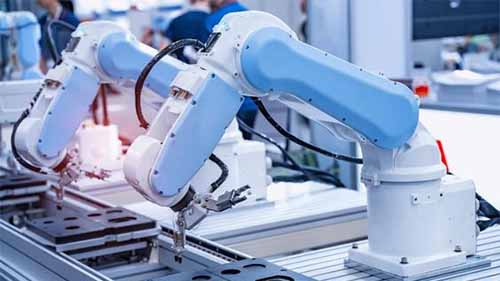
Industrial robotic automation is doing wonders in different sectors of society. Some of the benefits attributed to robots are the increase in productivity rate while reducing the number of working hours, speeding up the manufacturing process, and improving the accuracy of tasks assigned.
Industrial robots also ensure the consistency and quality control of the manufactured items. They assist humans in various sectors ranging from hospitals to homes making the work more feasible.
Considering all these advantages, many industries are shifting from manual human labor to robot industrial supplies. Here are some industries that are utilizing robotics to boost efficiency and feasibility.
Robots in Health Care
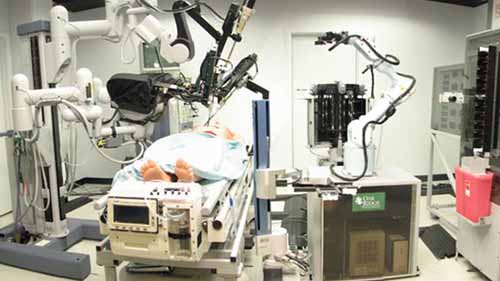
Source: Pinterest
With the advance in technology, robots are making a revolution in the health care and medical industry. The application of robotics has potentially improved a lot of medical practices like rehabilitation, surgery, and other activities for the welfare of patients and medical staff both.
A very reputed health care company, UnitedHealth Group Ltd, utilizes robots like SCARA robots, cylindrical robots, and 6 axis articulated robots for manufacturing medical devices to be used in a healthcare facility.
A robotic system, da Vinci Surgical System, is used by surgeons during complicated surgeries of the head, heart, neck, and other anatomical sites. This assists the surgeon in controlling hand movements while using delicate instruments inside the body.
Other robotic devices like exoskeleton and lifting machines are used by paralyzed people or patients having spinal cord injuries during their therapy sessions.
Robots in Agriculture
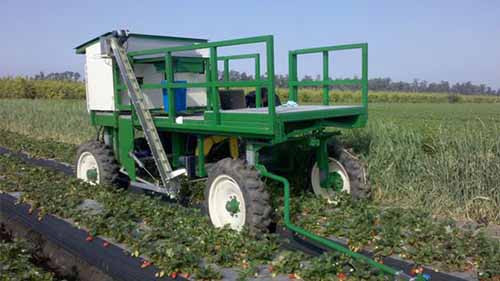
Source: Pinterest
A wide range of robotic technology is being used in the agriculture industry. Agri robots help in increasing the yield while maintaining overall costs. For harvesting of crops, GPS installed harvesters and tractors have been used for many years.
In recent years, the automation system has taken over different farming tasks like pruning, trimming, spraying, and mowing previously done by workers. The robotic devices also help in pest control and disease management for improving the quality of crops. A promising agriculture company, Bayer, uses various robotics like Agrobot E-Series, Blue River LettuceBot 2, and Agribotix for farming purposes. Material handling robots are used in food factories to pack and sort food items.
Drones are another one of the many industrial robot applications. They are used in agriculture for locating a land suitable for harvesting. Dones have replaced map-imaging which was a very hectic and time-consuming process to locate suitable harvesting sites. The multispectral sensors in them can check the fertility of the soil, the amount of water required by the crops, and can give other valuable information related to agriculture.
By using robots in agriculture, work efficiency will definitely increase to produce more food for coping with the increasing world population.
Robots in the Military
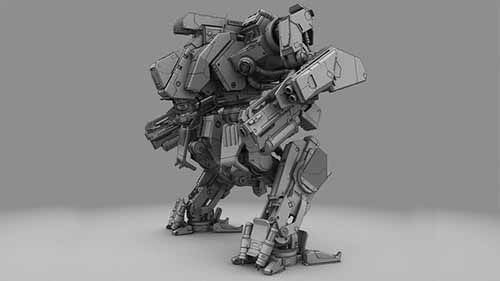
Source: Pinterest
Robots are also making waves in the military industry for their wide range of applications. Robotic devices are playing a vital role as an operational tool for military forces. Military robots use artificial intelligence for carrying out different tasks like picking off snipers, target acquisition, climbing ladders, operating in disaster situations, explosive ordnance disposal, search and rescue, fire fighting, and many more.
Lockheed Martin, a defense company, uses robots for the manufacturing of armed devices like drones and other automated systems. Armed forces use military drones to get the right information at the hour of need. These autonomous drones access the danger level by flying over the war areas and giving necessary real-time information to soldiers.
Military robots are equipped with sensors, screens, cameras, and are available in various sizes. They can easily carry out dangerous tasks like neutralizing explosive materials without risking any human life.
Robots in Manufacturing
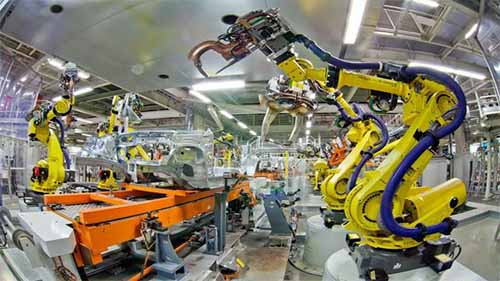
Source: Pinterest
Manufacturing robots have become very common in companies that have a high product demand. A pick and place robotic arm, for example, is way more efficient than humans when it comes to repeatability, quality, and precision of work.
Part picking robot, robotic welding machine, palletizing robot arm, automatic painting robot, are just a few example applications of automation of manufacturing. A very trusted automobile manufacturing company, YAMAHA Motors, uses industrial robots like SCARA robots, Cartesian robots, Stepping motor single-axis robots, and many others for manufacturing vehicles.
Robots in Food
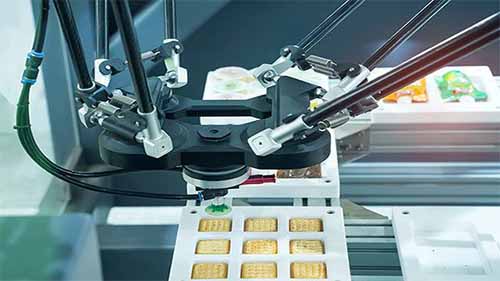
Source: Pinterest
From health care to the pharmaceutical industry, robots have made their way to every area of life. Food manufacturing industries also use robots for different purposes. The most common uses of such robots are sorting, pick and place of manufactured or to be manufactured food items, cleaning, cutting, and packaging.
A very popular pizza franchise, Pizza Hut, is using robotic waiters for meet and greet purposes with customers. Robots that can cook food and wash dishes have also been launched in the industry. These industrial robots have improved the safety and cleanliness standards of food manufacturing to ensure that clean food is supplied to every customer.
The robots used by food companies are equipped with sensors for the inspection of food. They are also equipped with vacuum tools to handle products with extremely delicate surfaces without even touching them.
Conclusion
The popularity of robots is increasing with each passing day because of their exceptional efficiency and work handling. Because of the wide range of applications attributed to them, they are used by almost every industry. The use of robotics in the modern production line can save a lot of time and money.
Robots can do tasks with high precision to ensure work efficiency. They are substitutes for human labor and can carry out extremely tedious tasks. They can handle dangerous tasks hence ensuring the safety and convenience of the workers. Automated systems and robotics have created a revolution in the world of industries and have transformed them for the well-being of mankind.
